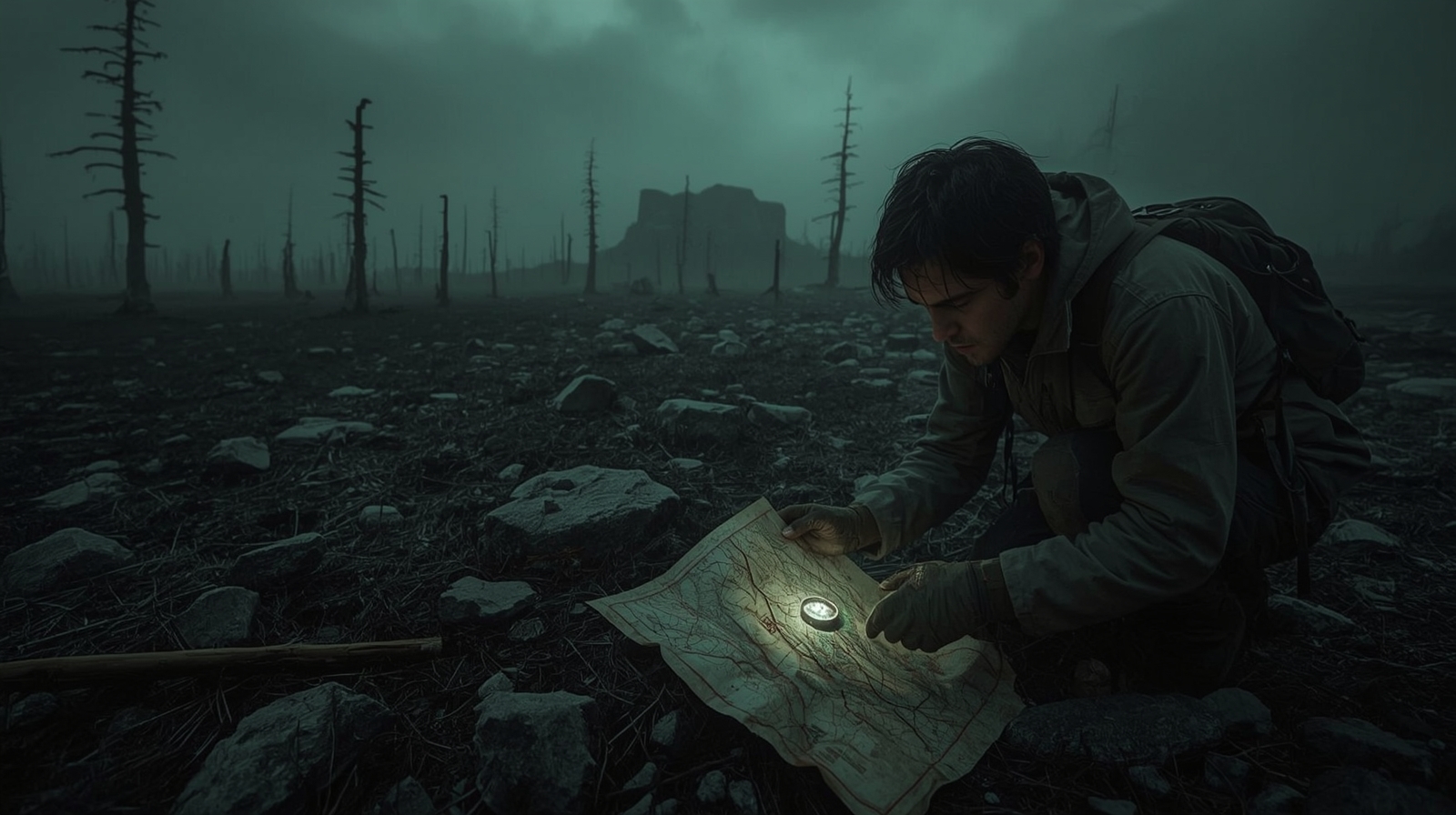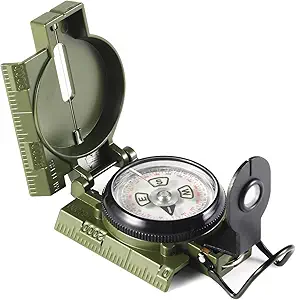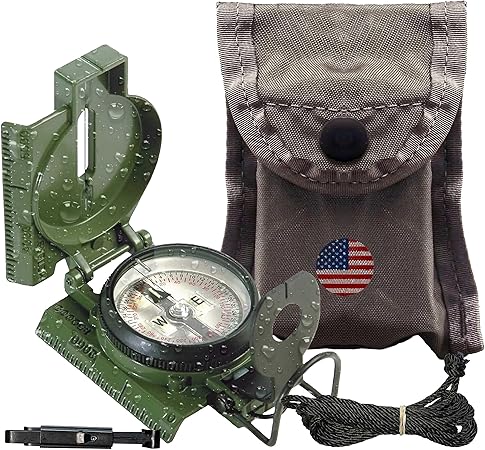Tactical Navigation: Mastering Land Navigation Without Modern Tech in Hostile Environments

Tactical Navigation: Mastering Land Navigation Without Modern Tech in Hostile Environments
The Importance of Map Reading Skills
Understanding Topographic Maps
Topographic maps are crucial for tactical navigation as they represent the Earth’s three-dimensional surface on a two-dimensional plane. They show elevations, terrains, water bodies, and landmarks. Mastering the ability to read these maps is essential for navigating through unfamiliar terrains. Key aspects include:
- Understanding contour lines, symbols, and scales
- Planning your route
- Identifying potential hazards
- Making informed decisions on the move
Scale and Distance Measurement
Grasping the concept of scale on a map is vital. It determines the map’s level of detail and how distance on the map translates to the real world. Essential skills include:
- Learning to measure distance accurately, either with a ruler or by using the map’s scale bar
- Estimating travel times
- Planning rest points
Reading Terrain Features
The ability to interpret terrain features on a map and relate them to the actual landscape is fundamental. This involves recognizing patterns of contour lines that indicate hills, valleys, ridges, and depressions. By mastering this skill, you can:
- Anticipate the physical effort required for different segments of your journey
- Choose the most efficient path
- Avoid natural obstacles
The Role of a Compass in Navigation
Basic Compass Skills
A compass is an indispensable tool for land navigation, especially when GPS is unavailable. Understanding how to:
- Align the compass with a map
- Set a bearing
- Follow that bearing in the field
are foundational skills. This section covers the basics of using a compass alongside a map to maintain your intended direction of travel.
Declination Adjustment
Magnetic declination is the difference between true north and magnetic north. Adjusting for declination is crucial for accurate navigation. This subsection explains how to adjust your compass for the local declination, ensuring that your bearing is accurate relative to the map’s orientation.
Navigating Without a Compass
There may be situations where you don’t have access to a compass. This subsection provides techniques for using the natural environment to determine direction, such as:
- Navigating by the sun
- Using stars
- Identifying natural landmarks
These skills are invaluable for orienting yourself and navigating in emergencies.
Natural Navigation Techniques
Using the Sun and Shadows
The sun is a reliable natural navigational aid. Methods like the shadow stick method can help you find cardinal directions during the day. This section also covers how to estimate the time of day based on the sun’s position.
Star Navigation
At night, the stars offer guidance. This subsection introduces basic concepts of using major constellations and the North Star for orientation. It provides a beginner-friendly approach to identifying key celestial bodies that can help determine your direction after dark.
Landmarks and Terrain Association
Using natural and man-made landmarks is a timeless navigation technique. This part explains how to:
- Identify and use landmarks for navigation
- Choose prominent features that are visible from afar and unlikely to change
- Use the visible features around you in conjunction with a map to confirm your location and make navigation decisions
Advanced Compass Techniques
Navigating with a compass goes beyond basic orientation skills. Understanding advanced compass techniques is paramount for traversing hostile environments confidently. These methods improve your precision in following a bearing and enhance your ability to reorient yourself if you get lost.
Triangulation for Location Pinpointing
Triangulation is a powerful technique for determining your exact location. By identifying two or three known landmarks visible on your map and in the physical environment, you can use your compass to take bearings on each. Marking these bearings on your map where they intersect will reveal your location.
Off-Trail Navigation
When navigating off-trail, maintaining a precise bearing is crucial. This involves:
- Setting a bearing on your compass from your map
- Moving in the direction indicated, all while accounting for obstacles
- Periodically checking your bearing to stay on course
Navigating in Varied Terrain
Different terrains present unique challenges for navigation. Understanding how to adjust your navigation strategy according to the environment is key.
Forest Navigation
Forests can be challenging due to limited visibility and the abundance of obstacles. Strategies include:
- Using a combination of terrain association and compass bearings
- Identifying and moving from one landmark to another
Desert Navigation
Desert landscapes offer vast open spaces but fewer landmarks. In such environments, precise compass bearings and distance estimation become crucial. Key points include:
- Paying close attention to the map’s scale
- Using time estimates to gauge distances traveled
Night Navigation Skills
Navigating at night introduces a new set of challenges. However, with the right skills, it’s possible to move efficiently even in the darkest conditions.
Using Night Vision Equipment
Night vision equipment can significantly improve your ability to navigate in the dark. It’s important to familiarize yourself with their use during the day, as they can alter depth perception and field of view.
Celestial Navigation Revisited
Learning to recognize key constellations and how they move across the sky can provide you with bearings when landmarks are not visible. This ancient method of navigation demands practice but adds a reliable tool to your navigation skill set.
Adapting to Adverse Weather Conditions
Weather plays a significant role in land navigation. Mastering navigation in various weather conditions ensures that you’re prepared for any situation.
Navigating in Fog or Low Visibility
In fog, rely more heavily on your compass and map. Shorten the distance between navigation points to ensure accuracy. It’s also helpful to use the sound of running water or distinct terrain features that can be followed by touch.
Handling Rain and Wet Conditions
Rain impairs visibility and can make terrain difficult to traverse. Strategies include:
- Waterproofing your map and compass
- Assessing currents and finding the safest crossing point
- Using rain to your advantage by following water flow downhill
Snow and Cold Weather Navigation
Snow can obscure trails and landmarks. Use a GPS as a secondary tool for confirming your position. Pay attention to the contours of the snow, as they can indicate underlying features. In cold weather, maintaining your body temperature is vital; plan your route to minimize exposure.
Leveraging Technology Wisely
While traditional navigation skills are paramount, incorporating technology judiciously can enhance your capabilities.
GPS Devices and Apps
A GPS device can confirm your location, help plan routes, and track progress. Always prepare for the possibility of device failure by carrying spare batteries and maintaining your traditional navigation skills.
Satellite Messengers and Emergency Beacons
In life-threatening situations, a satellite messenger or an emergency beacon can be a lifesaver. These devices allow you to send distress signals with your location to rescue services.
Smartphones and Navigation Apps
Smartphones, with various navigation apps, can be useful in emergencies. However, reliance on them is risky due to battery life limitations and potential lack of signal. Use them as a supplementary tool for cross-referencing information.
Putting It All Together
Mastering land navigation without modern technology is a blend of art and science. It requires understanding the environment, interpreting maps and natural signs, and adapting to changing conditions.
Continuous Learning and Practice
The key to proficiency in land navigation is continuous practice. Engage in regular exercises that challenge your skills, and learn from each experience. Joining navigation courses or workshops can provide structured learning.
Preparing for the Unexpected
Always plan for contingencies. Carry essential survival gear, inform someone about your route and expected return time, and be prepared to stay put if you’re lost until help arrives. Understanding your physical limits and making conservative decisions can prevent many emergencies.
Navigating in hostile environments without relying on modern technology demands respect for nature, sound judgment, and a comprehensive set of skills. By embracing the challenge, you equip yourself with invaluable knowledge that can ensure your safety and success in the wilderness. Remember, the goal is not just to reach your destination but to enjoy the journey and return home safely.
Whether you’re an adventurer, a military professional, or a survival enthusiast, the ability to navigate land without modern tech is empowering. It connects you with the environment in a profound way and prepares you for any situation. So, take the next step: practice, explore, and discover the world through the lens of tactical navigation.
Compare Products
Just as understanding topographic maps is crucial for navigating through the wilderness, selecting the right gear enhances your ability to use these maps effectively in the field. The Eyeskey Multifunctional Military Sighting Navigation Compass with Inclinometer offers a robust option for those needing precise orientation and elevation readings, while the Cammenga Lensatic Tritium Compass OD stands out for its durability and ease of use in low-light conditions. Similarly, the Cammenga Official US M is revered for its reliability and accuracy, making it a favorite among military personnel and outdoor enthusiasts alike.
Comparing these navigational tools allows you to align your choice with your specific navigation needs. Whether you require a compass that excels in nighttime navigation, one that provides detailed incline measurements
| Feature / Product | Eyeskey Multifunctional | Cammenga Lensatic | Cammenga Official |
|---|---|---|---|
 |
 |
 |
|
| $22.39 | $244.61 | $110.29 | |
| Shop now → | Shop now → | Shop now → | |
| Specifications | |||
| Brand | Eyeskey | Cammenga | Cammenga |
| Weight | N/A | N/A | 209 Grams |
| Dimensions | 4.02 x 3.27 x 2.13 inches | 15.24 x 10.16 x 7.62 cm; 191 Grams | 19.1 x 14 x 5.51 cm; 208.65 Grams |
| Material | Aluminum | Aluminium | Aluminium |
| Capacity | N/A | N/A | N/A |
| Efficiency | N/A | N/A | N/A |
| Waterproof | Yes | N/A | Yes |
